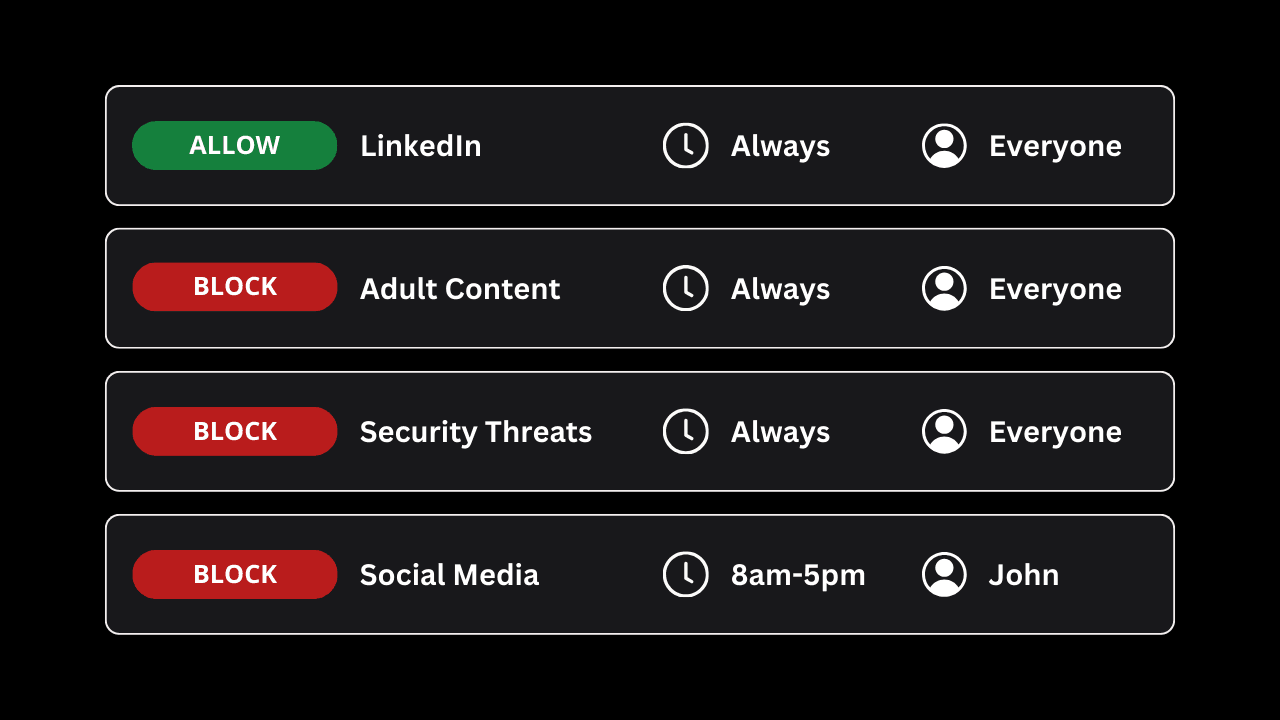Dumb Phone
Convert a Smartphone into a Dumb Phone
Customize a smartphone to remove features like Web Browsing and addictive apps while keeping Maps and useful features.

There have been several times in my life that I've seriously considered getting rid of my smartphone entirely and swapping it for a "dumb phone" like a flip phone.
But it's difficult to function in the modern world without Maps/GPS and the modern high-resolution smartphone camera. This is why I've never made the switch.
In my experience running a website dedicated to helping people restrict themselves from their own technology, people are switching to a dumb phone as a last resort.
The main reason is that they want to limit their exposure to the addictive and harmful aspects of the internet, which can be difficult to block out on a smartphone.
Instead of making the switch to a flip phone, my recommendation is to first try completely modifying your smartphone to make it a useful tool again instead of a distracting problem in your life.
You can convert both Android and iPhone smartphones into something closer to a dumb phone without losing access to Camera, Maps, and other useful features while blocking out the bad stuff.
Modify your Smartphone to Create Your own Dumb Phone
A common method to get a dumb phone is to modify your existing smartphone. The exact steps for this process will vary depending on the type of smartphone you own.
Dumb Android phones have a different setup process compared to dumb iPhones , but there are many similarities.
Here are some ways we recommend creating your own dumb phone.
Switch to a minimal interface
The first easy win you can implement right now is to simply the phone's interface to make it calmer and less appealing.
A minimalist home screen can reduce visual clutter and improve your phone's usability.
To create one, you should only keep the essential apps on your home screen and hide the rest (not just group them into folders).
Then, consider turning on grayscale mode to turn off the color on your screen.
This is helpful because color contributes to over-stimulation. After turning on Grayscale, you’ll start to notice that your phone feels less interesting!
Color scheme settings are typically found in the accessibility part of your smartphone's settings.
Learn more about achieving a minimal interface depending on your smartphone:
Limit Apps that can be Installed
One of the most problematic aspects of the modern smartphone comes from the apps that can be downloaded. A key component of a dumb phone configuration is imposing significant limits on app downloads.
Prevent Installing New Apps
One of the first steps you can consider is restricting access to downloading any new apps that don't already exist on your smartphone. The options you have will vary depending on the type of smartphone you own and how restrictive you want to get.
For example, you can use built-in parental controls to disable downloading new apps. For people who find this method easy to bypass, you can use supervised or managed device configurations for a stricter setup.
- Learn about preventing install of apps on Android .
- Learn about
preventing install of apps on an iPhone
.
Create a Blocklist to Restrict Certain Apps from being Downloaded
If you've decided that completely restricting all new app downloads is too restrictive for your dumb phone setup, consider creating app blocklists to prevent certain apps from being downloaded and run on the device.
Prevent Deleting Apps
Although it may seem counter-intuitive for a dumb-phone setup, you might consider preventing apps from being deleted after you've decided which apps should remain on your new dumb phone. If you've installed a content filtering app, you can prevent this app from being deleted so that content filtering isn't bypassed.
Web Browsing Restrictions
Another major area to lock-down in a dumb phone setup is web browsing. There are various approaches you can use depending on how restrictive you want the web browsing experience to be.
Remove Web Browser Entirely
The ultimate dumb phone setup will remove web browsing entirely.
- How to Disable Android Web Browser
- How to Disable iPhone Safari Browser
This approach is pretty restrictive and may go too far for most dumb phone setups. Instead, consider imposing significant internet restrictions using our content filtering approach discussed later on in this guide.
Enable a Restrictive Content Policy
If removing web browsing entirely goes too far for your setup, the next best thing to do is to set up a restrictive internet content policy.
A content policy can be used to block websites and apps using an always-on VPN or by setting the DNS settings on the device.
Here are some things you can use a Content Filter for to make your smartphone less appealing:
Block Categories of Websites and Apps
You can block an entire category of websites and applications, or specify specific apps that you want to block.
For example, using my Content Policy , I can specify entire categories of websites and apps that should always be blocked.
To prevent myself from simply logging in and bypassing these rules, I lock my Tech Lockdown profile.
Furthermore, I can use various device management methods to prevent turning off the VPN on the device, so the connection is always filtered.
Use a Default-Deny Blocking Approach
Another approach involves blocking an entire category like Social Networking, but exclude a specific app like LinkedIn.
This is called a "Default-deny" blocking approach because all apps and websites in a category are blocked other than the ones you specifically add to an allowlist.

Disable App Features
A Content Filter can also be used to limit certain types of features within apps.
For example, I can update my Content Policy to include a Block rule for YouTube images:
YouTube is now far less interesting without clickbait thumbnails.
You could also use this approach to access a website or app like Reddit in text-only mode by blocking images and videos:
Learn more about blocking Reddit Media .
Schedule Usage of Distracting Websites and Apps
Another strategy I use it to schedule when I can use websites and apps so that I'm intentional with when I use distracting websites and apps.
For example, I use my Tech Lockdown Content Policy to unblock news and certain social media websites on my lunch break.
Otherwise, these websites and apps are always blocked.
Schedule Internet Downtime
You can use the content policy to block the entire internet on your smartphone depending on the specific schedule you set.
When creating a rule in the content policy section of your Tech Lockdown dashboard, use the presets tab and select Internet Downtime.
Then, make sure you customize the schedule to fit your use-case.
Switch to Kiosk Mode
Using Device Management, you can enable Kiosk mode on your smartphone to significantly reduce the available features.
You can force your smartphone to only run certain apps. Other apps won't even show up on the home screen.
This can apply to default apps, like Settings or a web browser.
Step-by-step instructions for Android and iOS device management is available to Tech Lockdown member's in the Guides section of your dashboard.
